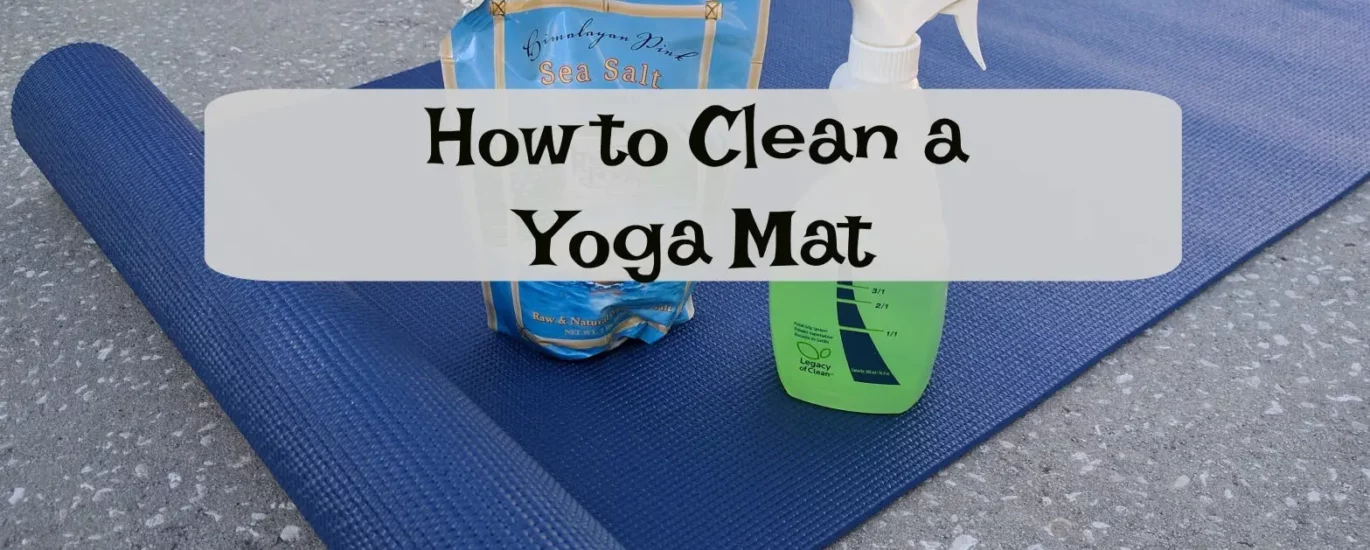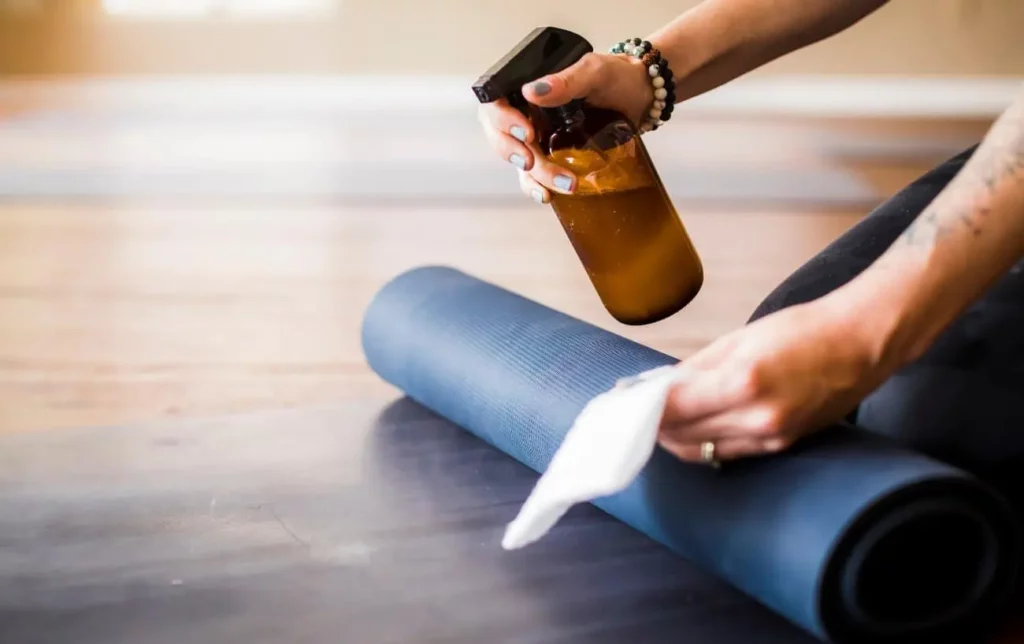


Are you tired of a dirty and smelly yoga mat? Regular cleaning of your yoga mat is essential for maintaining its longevity and hygiene. Moreover, we will delve into the significance of maintaining a clean yoga mat for a hygienic practice. Let’s now examine 3 Different Ways To Clean Your Yoga Mat, enabling you to keep it fresh and pristine for your upcoming practice session.

One of the easiest and most cost-effective ways to clean your yoga mat is by using a homemade mat cleaner. You can create your own mat cleaner using simple ingredients that are easily available in your kitchen. Here’s a simple recipe:
The vinegar in this homemade cleaner helps to disinfect the mat and remove any dirt or grime, while the tea tree oil provides a natural antibacterial and antifungal effect, leaving your mat smelling fresh.
If you prefer using a commercial cleaner specifically designed for yoga mats, there are several options available in the market. Look for a cleaner that is eco-friendly, free from harsh chemicals, and suitable for your mat’s material. Follow the instructions provided by the manufacturer for the best results. Generally, commercial mat cleaners come in a spray bottle, and you can simply spray it onto your mat, wipe it down with a clean cloth, and allow it to air dry.
In particular, it is recommended to perform a deep cleaning of your yoga mat at least once a month, or even more frequently if you engage in regular yoga practice. This thorough cleaning method is crucial for effectively removing stubborn dirt, sweat, and bacteria that may have accumulated on your mat over time. Here’s how you can deep clean your yoga mat:
A healthy environment for your yoga practice, free from germs, dirt, and unpleasant odors. Additionally, 3 Different Ways To Clean Your Yoga Mat can provide better traction, helping you to stay balanced and focused during your practice. Here are a few more points to consider when cleaning your yoga mat:
Dry brushing is an effective way to remove dirt and debris from the surface of your yoga mat. You can use a soft-bristled brush or a clean cloth to gently brush or wipe down your mat, focusing on the areas that are heavily soiled. This method can be done in between deep cleanings to keep your mat clean and fresh.
Sunlight is a natural disinfectant and can help to kill bacteria and eliminate odors from your yoga mat. If your mat is made of a material that can tolerate sunlight, you can lay it out in direct sunlight for a few hours. The UV rays from the sun will help to sanitize the mat and keep it fresh. However, be cautious not to leave your mat in the sun for too long, as prolonged exposure to sunlight can cause some mats to fade or become brittle.
If you notice a specific spot or stain on your yoga mat, spot cleaning can be an effective method to target the area directly. You can use a mixture of water and mild detergent or a gentle stain remover, and a clean cloth or sponge to gently clean the stained area. Be sure to rinse thoroughly with clean water and allow the mat to air dry completely.
Prevention is always better than cure. Taking preventive measures can help to minimize the need for frequent deep cleaning. After each yoga practice, use a clean towel to wipe down your mat, removing any sweat or dirt. You can also use a yoga towel or a mat towel on top of your mat during your practice to absorb sweat and prevent it from seeping into the mat. Regularly washing or changing your yoga towel can also help to keep your mat clean and odor-free.
Cleaning your yoga mat is essential for maintaining its cleanliness, durability, and hygiene. There are 3 different ways to clean your yoga mat, including homemade mat cleaner, commercial mat cleaner, and deep cleaning. Additionally, you can also incorporate other methods such as dry brushing, sunning, spot cleaning, and prevention techniques to keep your yoga mat fresh and clean. By incorporating regular cleaning into your yoga routine, you can ensure a healthy and enjoyable practice on a clean and well-maintained yoga mat.